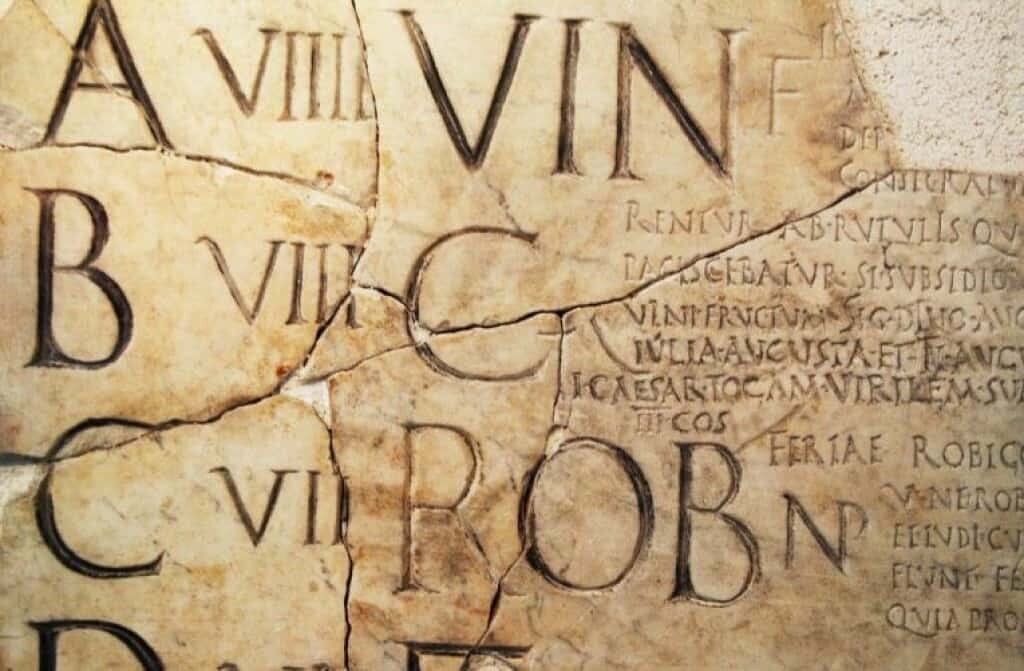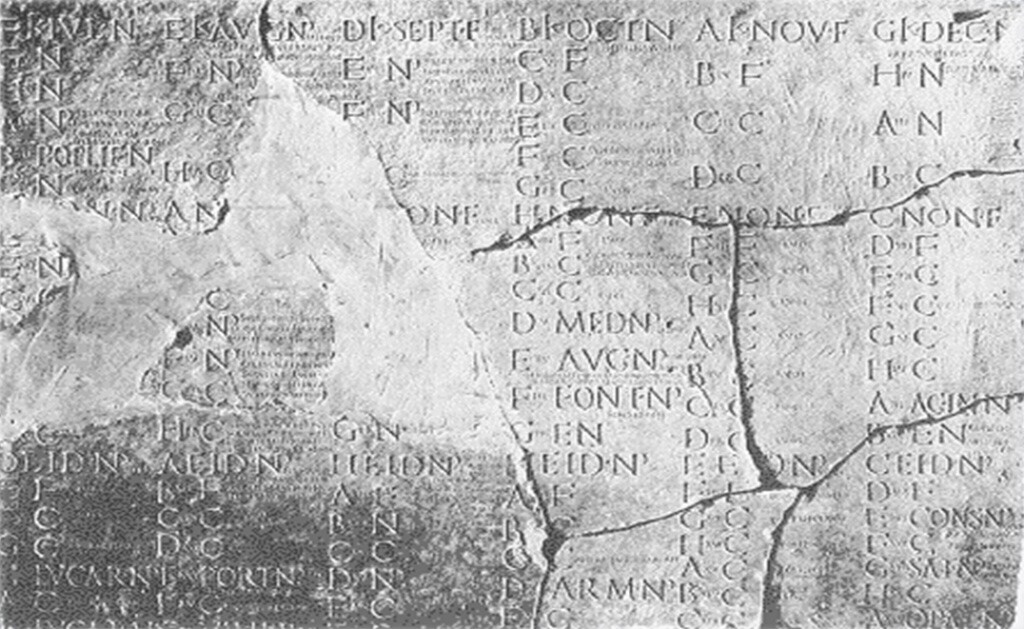Prior to Julius Caesar, the Romans used a lunar calendar with ten months and 304 days in a year. This caused massive confusion, as the moon makes a complete orbit around the earth in only 27 days, 7 hours, and 43 minutes. As a result, calendar dates of solstices, equinoxes, and religious festivals would shift to different times of the year through time. The confusion affected many things, such as the planting and harvesting of crops. Additionally, it had a significant impact on exactly when government officials, known as “consuls,” held their one-year positions, which they preferred to start on January 1 to mark the New Year. However, January could possible fall in the middle of Autumn. How did we eventually leave the lunar calendar to get a fixed calendar and New Year day?

The Julian Calendar
Julius Caesar learned about a new and more accurate way of keeping time from his association with Cleopatra, as the Egyptians used a calendar based on the movements of the Sun instead of the Moon. Their calendar had 360 days and 12 months in a year. Caesar instituted the Egyptian system of timekeeping and developed a 12-month calendar in 46 BCE. To make his mark on the new Julian calendar, he renamed the month of July after himself, and the next month would later take the name of his successor, Caesar Augustus, who made further improvements to the calendar.
January 1 became the start of the new year primarily because that was the date Roman politicians began their official duties. It is commonly believed that the month was named after the ancient Roman god, Janus, who represented change and beginnings and is depicted with one face looking back and one face looking forward.

While the Julian calendar was better than the previous one, it is not the calendar we know today. A slight miscalculation of the solar year caused a gap of about 10 minutes per year. Those minutes added up, and by circa 1450 there were an additional ten days floating around that nobody knew what to do with.
The Gregorian Calendar
Although others had tried to come up with a solution, Pope Gregory XIII was the most successful. Around 1575, he created a council to seek out a more accurate and comprehensible calendar from astronomers across Europe. The scientists of that time had been building upon the work of a number of prior astronomers, such as Copernicus and Cardano. After making adjustments and corrections, a number of them made their new calendar proposals to the council. According to Frederic J. Baumgartner, who wrote an essay called Popes, Astrologers and Early Modern Calendar Reform:
[blockquote align=”none” author=”Frederic J. Baumgartner”]The reform eventually accepted came from a mathematician, Luigi Lilio, from Calabria but living in Verona. He had died, but his brother had submitted his proposal in 1578 . . . . In early 1581 the commission formally presented the pope Lilio’s plan, which was based on the Alfonsine star tables, not the Prutenic [Copernicus’ tables]. . . .[/blockquote]
The new Gregorian calendar corrected the 10-minute error and instituted an additional day, February 29, to be added every four years. Pope Gregory signed the reform in 1582, and all Catholic governments were expected to conform to the new calendar, but this would mean changing the dates of certain festivals and religious observances. January 1 would mark the new year.
Protestant and Orthodox countries rejected the new calendar for religious reasons. They loudly proclaimed that Gregory was the Antichrist that the New Testament mentions, as he had changed time and the seasons.
Surprisingly, many developed countries did not adhere to January 1 as New Year’s Day until relatively recently. Most of the British territories did not make the change until 1752, and Russia waited until after their 1917 revolution.
The Changing New Year
Most people are aware of the movable dates of the Chinese New Year and the Jewish New Year (Rosh Hashanah). Even in countries that have a fixed calendar, the first day of the new year can vary widely. Ethiopia starts its year on September 11. Some parts of India celebrate the festival on dates based on the Hindu calendar. Interestingly, the tiny area of Gwaun Valley in Wales uses the archaic Julian calendar and celebrates January 13 as the start of a new year.
Ultimately, January 1 became the start of the year due to political elections in Rome that took place thousands of years ago. Fortunately, today, January 1 occurs at the same time of the year, thanks to the adoption of the new, fixed calendars. However, science has noted that astronomical factors, such as the time it takes the earth to circle the sun and the distance to the sun, are unstable. Perhaps this will necessitate another change in the calendar that will move the start of the year to a different date. Only time will tell.
Additional references:
“45 B.C. New Year’s Day”, History, pulled 12/9/16
The Roman Calendar, pulled 12/29/16
Co-author: Kimberly Lin